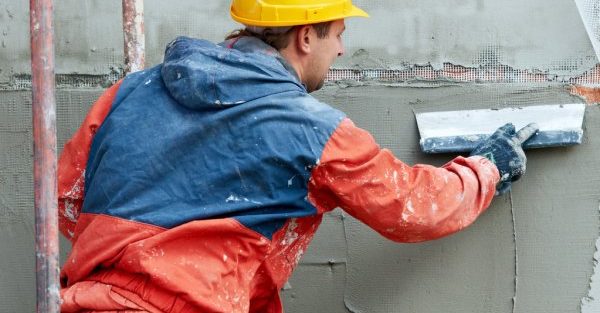Steps for Repairing Stucco:
Step 1: Break Off Loose Stucco
Whack it with a hammer, or a hammer and a cold chisel, taking care not to damage the underlying wood lath supports. Eye protection is a must.
Step 2: Chip Away At The Edges
Continue until you reach stucco that’s firmly adhered to its lath. Cut any metal mesh with snips.
Step 3: Cover The Exposed Lath
Using a utility knife, trim a piece of grade-D builder’s paper to fit tightly along the boundary where the old stucco meets the exposed wood lath. Fasten the paper to the lath with roofing nails, then put a second layer of paper on top of the first.
Step 4: Add Mesh
Place galvanized metal lath over the paper and trim it tight against the edge of the stucco. Snips with offset handles will make this job easier. Drive more roofing nails through the mesh and into the wood lath.
Step 5: Mix The Stucco
Following the first-coat recipe, stir up a batch of stucco, using a wheelbarrow as a mixing bowl. The acrylic bonding agent added to this mix improves the adhesion of the new stucco to the old.
Step 6: Sling It
Wet the edge of the old stucco so it won’t suck moisture out of the patch and weaken the bond between old and new. Scoop fist-size wads of wet stucco onto a brick trowel and toss them against the wire lath until it’s completely covered. Smooth the mix with a finishing trowel, then pack it against the edge of the existing stucco with a brick trowel. Keep adding more material until this layer is about 1/2 inch below the existing stucco surface.
Step 7: Scratch It
When the patch loses its wet sheen, score its surface to improve the bond to the next coat. Tape a plastic sheet over the patch to keep it from drying out.
Step 8: Apply Second Coat
Wait seven days, then remove the plastic and mist the patch with water. Mix up a batch of stucco following the second-coat recipe, and trowel on a 3/8-inch-thick coat, working from the bottom up. Pack down the edges with a brick trowel. Wait for the wet sheen to disappear, then trowel the patch smooth, just below the level of the existing stucco. Cover again with a plastic sheet.
Step 9: Put On The Finish Coat
After three days, remove the plastic, mist the patch, and mix up a fresh batch of stucco, following the finish-coat recipe. Different textures require different techniques. To match this wall’s original “dash” finish, DiSilva scooped small globs of wet mix onto his brick trowel, then flicked them against the wall until they were flush with the old surface.
Step 10: Wait To Paint
Let the patch cure for a week before painting it and the rest of the wall. Under a coat of heavy-bodied acrylic elastomer, the patch is invisible.
Source: This Old House



